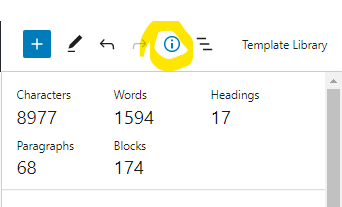Write the Perfect Blog
15 Proven Tips to Writing an Amazing Blog Post

- 1. Think About Your Niche/Brand and Stay in it
- 2. Look at Competitors
- 3. Think About Your Audience and How to Solve Their Problems
- 4. Select Your Keywords
- 5. Create Your Title and Heading
- 6. Write an Appealing Introduction
- 7. Pay Attention to the Fonts
- 8. Optimize Word Count
- 9. Continue to Persuade
- 10. Include Helpful Links
- 11. Make Your Post Easily Scannable
- 12. Make your Blog Easy to Navigate
- 13. Make your Blog Visually Appealing
- 14. Optimize Page Speed
- 15. Do Not Forget a Call to Action
- FREE BLOG TEMPLATE & CHECKLIST
- Frequently Asked Questions About Writing the Perfect Blog
According to financesonline.com 86% of content marketers use blogs as part of their marketing strategy, and 55% of marketers have claimed to have gained new customers because of blogging.
All compelling reasons to write quality blogs! These proven tips will not only help your blogs look better, but are proven to increase conversions as well.
BEFORE YOU WRITE
1. Think About Your Niche/Brand and Stay in it
It’s tempting to use your blog as a place to vent and share your personal thoughts as they come to you…and you might have genuinely good opinions to share.
However, if you are all over the place, it’s difficult to build a following or to write the perfect blog that will have readers coming back to learn more.

For example, learnandserve.org represents A Plus Insurance, so the majority of our content sticks to the niche of insurance.
Even if I’m interested in the top 10 Netflix original movies, that would be highly confusing to our current audience if all of the sudden our focus shifted to that type of content.
Therefore if you stick to one topic, you increase the chances that the audience you build will be interested in all of your content, which can then help you write the perfect blog for you and your audience.
2. Look at Competitors

No you don’t want to steal or duplicate content.
That is obvious.
But it isn’t wrong to use high performing competitors as inspiration and to learn from what they are doing RIGHT.
Use their concepts and do it BETTER so you can write the perfect blog.
3. Think About Your Audience and How to Solve Their Problems
Now that you have carved out a niche for yourself, think about your audience and their needs.
Before looking for your keywords, you must think very carefully:
- Who is your customer?
- Who is your potential audience?
- Is there an overall demographic?
- What are their challenges and problems that need to be solved?
- What are their goals?
When you have a clear idea of who you are writing to, you can more effectively write the perfect blog:

- Identify problems and offer a worthy solution.
- Know what motivates your audience
- Design a marketing plan to attract that specific audience
For example, let’s say we wanted to write a post on insurance in Texas. Instead of blindly creating a page about just any kind of insurance, we need to research what the people in Texas are concerned about in regards to insurance. We would:
- Search the internet forums
- Search trending Google searches
From our research, we could see a trend in people being concerned about tornadoes and how to protect their property.
Now we have narrowed down our focus to tornado damage and insurance in Texas.
4. Select Your Keywords
You know your niche, you thought about your audience and their needs. What keywords should we pick in order to write the perfect blog?
Do we just title our blog: tornado damage in Texas?
No…we have to think like our audience. What potential words would I type into the search engines?
Research:
- What keywords are my competitors using?
- Which keywords rank well?
For example: our tornado/insurance content, we might narrow down our keyword list to something like: tornado damage coverage in Texas, homeowners insurance that covers tornado damage, Texas, etc.
This article at backlinko.com is very helpful when looking for guidance on how to choose the best keywords. Neil Patel has always been a fantastic keyword research resource for us as well.
WHILE YOU WRITE
5. Create Your Title and Heading
Now that you have your keywords selected…you can craft an SEO optimized title and headings.
It has been recommended that a page contain only 1 H1 tag (as your Title heading), with several H2 tags as your sub headings.
Not only do you want the headings to be bold and easy to see, when you create your H1, be sure to utilize your key words in a clear and concise way. Then, the following H2 subheadings need to carryout that theme and stay focused and consistent with your topical intent so that way it is easier to write the perfect blog.
Check out how we optimized one of our learnandserve.org pages by improving how we wrote the H1 and H2 tags and then use this worksheet yourself to help fix or create your own SEO optimized titles and headings!

6. Write an Appealing Introduction
You will not have long to capture the attention of your readers.
It will be crucial to write a title and introduction paragraph that pulls the reader in.
Make sure to identify the problem you will solve, and that you will expertly offer the solution. If you write the perfect blog well, you will entice your audience to keep reading.
Neil Patel has one of the most in depth lessons on how to write the perfect blog post introduction. We highly recommend you check it out!
7. Pay Attention to the Fonts
Make sure to use a font size and style that is easy to see and read when you write the perfect blog.
Can you see this text? You have great eyesight….but don’t write stuff this small please.
It is recommended for body text to be no smaller than 14 PX, preferably 16 PX. We prefer 20 PX.




Keep the fonts clean and simple and if you can choose the style, avoid fonts that do not age well. Comic sans is big NO, and stay away from cursive styles because they are not easily readable.
8. Optimize Word Count
Your content should use your keywords (do not keyword stuff, let it happen naturally) and have an optimal word count.
Not SEO optimal
0words
Decent for SEO
0words
Excellent for SEO
0words
Look at your competitor’s high ranking pages and posts and use their content length as a guide to write the perfect blog.
If you are using the WordPress Gutenberg editor, they provide a nifty little word and character counter on the upper left hand corner.

If you are working off page, the following link is a very helpful and free word and character counter.
A particular competitor that we like to check out typically uses 1500-1700 words, but many SEO experts will tell you that 2500 words is ideal.
Be sure that all content is relevant and helping solve a problem…do not add fluff just to get your word count up.
9. Continue to Persuade
Be sure that when you write the perfect blog, your content continues to emphasize that you can help your readers solve a relevant problem.
Be positive and write in a way that builds their trust. Try things such as:
Including real life testimonials on how your proposed solution has helped someone.
Use data and statistics to support your statements.
AFTER YOU WRITE
10. Include Helpful Links
Continue to provide concrete ways that your post can help someone.
Include links to reliable sources, and be sure to cite your source – you don’t want to steal content.
More importantly, include internal links to other posts or pages on your website to further show how we are the experts and have more information that can help them.
Plus… internal links will help with your bounce rate and CTR (let us help you understand CTR and bounce rate if these sound like foreign terms.)
11. Make Your Post Easily Scannable
Do not use big chunks of text. No one will read or want to read it.
In order to write the perfect blog, people need the solutions presented to them quickly and concisely.
You can include a substantial amount of information, just be sure to utilize things such as:
- Bullet points
- Numbers
- Headers
These will break up your content into shorter easy to read sections.
12. Make your Blog Easy to Navigate
The best way to write the perfect blog is by adding anchor links or a table of contents. This gives your readers a nice break down of what to expect and an easy way to find a specific point.
Not sure how to do that? We have a quick and easy guide for you:
13. Make your Blog Visually Appealing
- Be sure to use high quality images that are relevant and enhance your content.
- Try to use original images if possible, but if you use another source’s images, try to find images that aren’t used in a million other websites.
- Avoid blurry and dated looking images.
- Don’t use PNGs that have the gray/white transparent grid behind them.

- Place one image above the fold near your title and introduction.
- Make sure image is aligned in a way that doesn’t break up the text.
- Don’t forget to set your featured image.
14. Optimize Page Speed
If your page speed takes longer than 3 seconds to load, it is said that you will lose up to 53% of your readers.
Yes you want visually appealing content, but be sure your images are optimized so that they don’t slow down your page.
15. Do Not Forget a Call to Action
Yes we want people to read our blog at least once, but wouldn’t it be nice if they came back or subscribed to our newsletter, etc?
Include 1 call to action that invites the reader to engage and potentially become a regular visitor such as a:
- Leave a comment
- Share on social media
- Buy our product
- Sign up for email newsletter
IN CONCLUSION
Gone are the days when blogging was simply a creative outlet for people to share their opinions on the internet.
It’s more important than ever to optimize your content to increase your chances of return on investment. If you need a refresher we have all of the above tips boiled down into a simple cheat sheet.
FREE BLOG TEMPLATE & CHECKLIST
We Want to Help! What Facets of your blogging content do you struggle with the most?
Frequently Asked Questions About Writing the Perfect Blog
Q1: What are the key elements of a well-written blog post?
A1: A well-written blog post should have a clear and engaging headline, informative and organized content, relevant images or multimedia, proper formatting, and a compelling call to action. These elements can help make your blog post more effective and engaging.
Q2: How can I optimize my blog post for search engines (SEO)?
A2: To optimize your blog post for SEO, you can research relevant keywords, include them strategically in your content, use proper heading tags, optimize images with alt text, and create high-quality, shareable content that attracts backlinks. These practices can help improve your blog’s search engine rankings.
Q3: What are some tips for promoting and sharing my blog post effectively?
A3: To promote your blog post effectively, you can share it on social media platforms, engage with your audience through comments, collaborate with influencers or other bloggers, and use email marketing to reach your subscribers. Creating valuable and shareable content is key to successful promotion.
Last Updated on by Camron Moss

